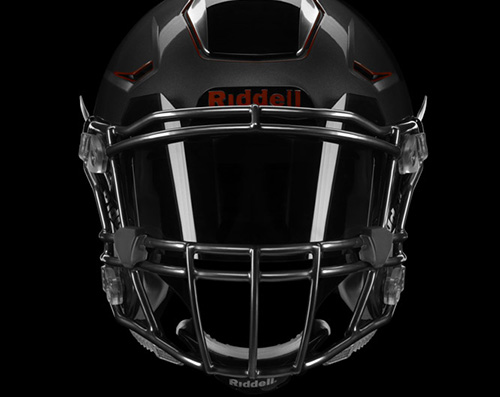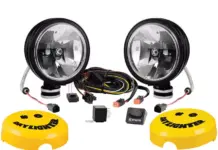Publisher: 3D Print.com
Date: December 4, 2020
Author: Sarah Saunders
I’m not a big sports fan, but even I’m aware of the many possible 3D printing applications, from helmets and mouthguards to surfboards and shoes and so much more. But, is it really as prevalent as we think, or is it all just a matter of hype? A pair of Australian researchers, from Deakin University and the University of Technology Sydney, were curious to know the answer, and recently published a paper, “Is additive manufacturing improving performance in Sports? A systematic review,” on the subject in The Journal of Sports Engineering and Technology.
“Sport is an industry that may benefit from the opportunities offered by additive manufacturing (AM), and the media has portrayed increasing adoption of the technology in sports products. This systematic review aimed to consolidate and interpret the available empirical evidence concerning applications of AM in sports following the Preferred Reporting Items for Systematic Review and Meta-Analysis Protocols (PRISMA-P) 2015,” the two wrote in the abstract.
The benefits that 3D printing offers, such as weight reduction, customization, and low volume experimental capability, make the technology just as attractive to the sports industry as they do for applications in aerospace and medical, to name only a few. Most of the time, sporting products are mass produced in order to, as the researchers wrote, “suit normative population physical characteristics such as athlete heights, weights, foot sizes and limb lengths.” Any customized products, like orthotic insoles, are normally only made in a limited amount of sizes, but 3D printing can change this, which helps improve performance, enhance comfort, and diminish injuries.
S-Works Mirror saddle (Image courtesy of Specialized)
This all sounds well and good, but regardless of any major 3D printed sports stories, such as the Adidas Futurecraft shoes, multiple prosthetics used in the Paralympics, and the S-Works Power Saddle for Specialized Bicycle Components, the researchers explained that there hasn’t been much academic research into using the technology in sports, so “it is difficult to ascertain whether these theoretical benefits could be realized in practice.” Even more, most 3D printed sports products are not supported with data or case studies, and one 2019 study reported that “the sports industry has a general lack of awareness of AM technology” and that 3D printing is “not being implemented in any significant way to drive production of new forms of products and markets.”
“Given these contrasting portrayals of AM within sports, this study asked the question what scientific evidence is available that AM provides improved sporting products? The main objectives were to document the types of sports and products utilizing AM, identify the different AM technologies, materials, software and associated digital technologies employed, document the scale of research studies, and synthesize the opportunities and challenges of AM from literature,” the pair wrote.
The two researchers conducted a systematic review methodology, using meta-analysis to look at trends related to 3D printing sports applications and reviewing the existing technical knowledge about the software and hardware used.
“Whether AM is supported by researchers, or simply media hype that inflates consumer expectations, this study provides an objective analysis of academic research into sporting applications as the technology transitions from rapid prototyping to increasingly end-use applications,” they stated.
Table 1. Searches conducted in each database, with grayscale used to group similar sports/searches.
The analysis and review took place across four different databases, and “according to the Preferred Reporting Items for Systematic Review and Meta-Analysis Protocols (PRISMA-P) 2015.” Results were limited to research published between January 1984 and May 2019 that had been peer reviewed and written in English, and the researchers used 28 search phrases, both specific and broad, such as 3D printing, sport, rapid prototyping, and a variety of different sports, including soccer, hiking, golf, baseball, volleyball, and yoga, that were determined to be “the top ten adult sports across six regions of the world.”
“After gathering initial search results, duplicates were removed using automatic tools within Endnote,” they explained. “Further duplicates were manually removed from the library in circumstances where different databases classified the same article differently (e.g. conference paper or conference proceeding), or where information was slightly different (e.g. author first and last names in a different order).”
Each author independently screened the full library to make sure the results adhered to a set of inclusion criteria, such as 3D printing being used to make a functional piece of sporting equipment and included quantitative data. The articles that met all criteria were put in one library and “read in full to assess final validity for inclusion,” and any left after this final review were then analyzed with the help of an evidence table in order to “report relevant study characteristics and outcomes.”
Figure 1. Strategy and results of systematic review at each stage of the process to identify relevant literature.
The initial search identified 11,185 articles, and by the end of the entire process, 26 articles made the cut, produced by 18 unique author groups. The first ten of these were from 2010, which was 26 years after important patents had been filed for additive manufacturing. So from January 2010 through May 2019, eighteen journal articles, seven conference papers, and a single book chapter were published that fit the criteria for this review.
Figure 2. Type of publication by year.
The researchers found a total of 12 sports identified in these 26, with running and walking by far the most popular, as you can see in the figure below, with a total of ten articles. Cycling was covered in four articles, and badminton in three, while the rest, such as climbing, cricket, baseball, and rowing, were each featured in only one publication.
“It is important to note from this data that of the 24 discrete sports searched in databases (considering groupings in Table 1 and excluding the general term ‘‘sport* ’’), only eight of these sports appeared in the literature (33%),” the researchers said.
Figure 3. Sports investigated in literature.
The researchers then used statistical analysis to compare whether the 3D printed products in these 26 articles offered a major improvement, similar performance, or lower performance, when compared to products fabricated with conventional means.
“It is important to note that the criteria used to assess performance in each study is different, and making comparisons between different studies is difficult,” the team explained. “For example, depending on the product or feature, ‘‘improving’’ a quality such as aerodynamic performance may be considered negative, as demonstrated in the badminton studies where reducing the drag coefficient of a shuttlecock would alter the flight behavior understood by players, thus negatively impacting play.”
They determined that ten articles showed that the 3D printed products had an improved performance, while eight showed a similar performance, five had a lower performance, and three were marked as N/A, because the literature “did not provide comparison outside of products produced.”
Figure 4. Overall advantage (38%), similarity (31%), & disadvantage (19%) between AM and conventional products. N/A (12%) denotes articles that did not provide comparison to existing products.
The researchers also classified the specific products from the articles into three broad categories: essential equipment, like bicycles; products to improve fit/comfort or reduce risk of injury, such as insoles; and protective gear, including shin guards and helmets.
Figure 5. Categories of products within literature.
The team also looked at the various materials, CAD software, and AM technologies that each study used.
“From a technical perspective, powder bed fusion technologies were the most utilized with 50% of articles using either selective laser sintering (SLS) or selective laser melting (SLM), although 52% of articles did not name the 3D printer used and 36% did not name any software used to design or optimize products,” they explained.
Figure 6. AM technologies used to manufacture products. The (Polymer) group represents papers that did not describe the technology used where it was clear it was a polymer AM technology.
Material jetting was the next most popular after SLS 3D printing, followed by FFF technology, SLM printing, and binder jetting. In terms of material, titanium was used in all SLM studies, and polyamide in all SLS studies. Fullcure 720 was used in three articles, ABS in two, and the rest of the materials mentioned in the below above were only used once; 16% of the articles did not specify which material was used. Solidworks and Geomagic were the popular CAD software programs, then Materialise Magics, and other software packages used by design engineers, like Rhinoceros. But, 35% of the articles did not indicate which software they used.
“This oversight presents difficulties for follow-up investigations by external researchers. In the future, journal editors and reviewers should encourage authors to provide complete methodologies to aid in study comparisons,” the researchers stated.
The researchers also learned that 3D scanning is used often as a complementary technology in the designing and optimizing of sports products, including leg guards and personalized insoles.
Table 3. Summary of software, 3D printers, materials, etc. used in articles.
They identified several positive AM opportunities in each study, including cost-effectiveness for customized products, lowered costs due to part consolidation, and the possibility for nearly limitless design iterations. However, they also found several challenges, including:
- AM is typically slower than other manufacturing processes
- Many 3D printed parts still need to combine with a conventional part to form a full product, which limits geometry
- Manual intervention and AM design skills are needed to use optimization software
- Long-term durability of these materials in the sports industry is not clear, as many studies only used limited sample sizes
- 3D printed products may not meet sporting regulations
“Across all literature included in this review, it was clear that authors held an optimistic opinion of AM as it relates to sporting applications, despite results that may have been on par or subpar to conventional products,” the researchers wrote.
However, despite this optimism, they determined that there still isn’t enough peer-reviewed research in terms of 3D printed sports applications. For instance, they found no evidence of the 3D printed bespoke products in the studies they reviewed leading to new commercial products, and commercial development of 3D printed sports products is occurring separately from academic development, which is not ideal and raises issues with IP non-disclosure agreements. Additionally, all of the sports the pair identified as meeting their inclusion criteria were typically featured in a single study, or several studies by the same group of authors, so validation of the findings is not happening.
“The more mature medical AM field provides a useful contextual comparison to address the research question of this study. Research has documented the opportunities for personalized products to improve health and recovery, similar to sports, and opportunities to utilize other digital technologies like 3D scanning, as well as computed tomography (CT) or magnetic resonance imaging (MRI),” they explained.
“Compared to these reviews of medical applications, where the average number of papers reviewed was 131, this broad systematic review of AM for sports applications with only 26 publications is significantly smaller than medical applications and reinforces comments by Mawale et al. that research into sports applications is only at the ‘‘initiating phase’’ compared to the more established medical industry.”
Riddell Speedflex Precision Diamond Helmet
The researchers did note that they may have missed some relevant literature due to a smaller number of databases and “extremely specific” keywords searched. But, they also state that any missing articles would likely not “significantly alter the findings and recommendations of this research.”
“As a result of this study it is possible to conclude that additive manufacturing has yet to become mainstream within academia for sporting applications. Despite exemplars frequenting 3D printing and additive manufacturing news websites, manufacturing trade shows and conferences, little scientific evidence exists to support the adoption of AM to produce sports products, with only twenty-six peer reviewed articles identified up until May 2019,” the research duo concluded.
“Through objective collation of the evidence to-date, this research cuts through the hype surrounding the use of AM to manufacture sporting products and highlights the need for rigorous, sustained and ongoing research in order to support manufacturers, product designers and athletes of all experience levels.”
Comments:
This article put some science behind all the hype of 3D printing and lays the groundwork for more research in the future. I liked how they laid out the research and what will come from it.




